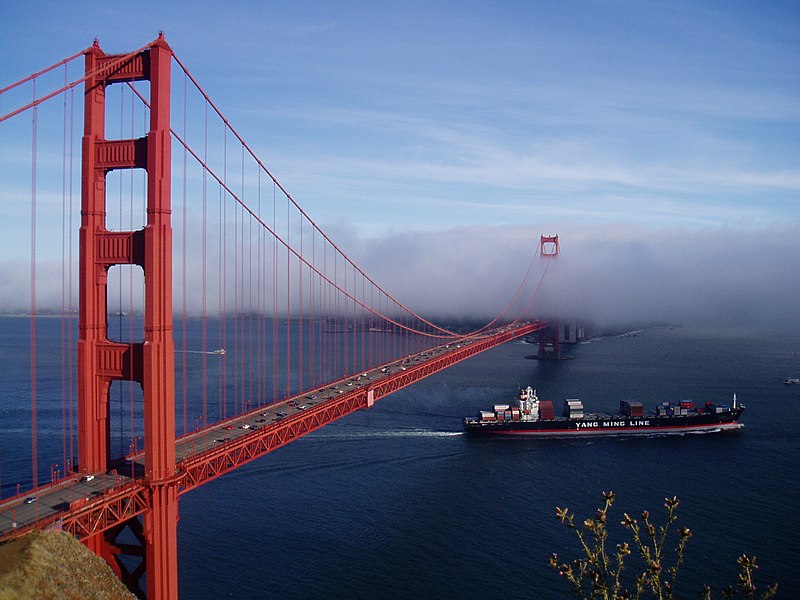
A Yang Ming ship passes under the Golden Gate Bridge. A new trend in slow-steaming at 20-22 knots means it takes three days longer to cross the Pacific Ocean.
Financially strapped ocean carriers are cutting fuel costs by reducing vessel speeds on a growing number of long routes, and the impact of what’s called slow steaming is starting to reverberate across supply chains. Even amid a halting recovery, the economy is very literally slowing down on the water, with dozens of routes — mostly those out of Asia — extended by several days. Shippers may have to get used to it. A Maersk Line executive said engine speeds and vessel emissions “are 100 percent correlated.” He said slow steaming — sailing 25-knot vessels at 20 to 22 knots — “is now becoming the industry standard, and everybody is getting used to it. I think we are entering a new era.”
